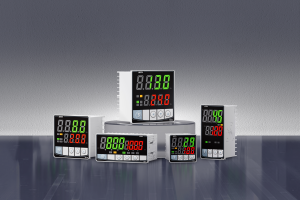How to Reduce Oscillation in PID Controllers: Comprehensive Guide
Learn how to reduce oscillation in PID controllers with this comprehensive guide. Understand the causes, tune PID parameters, implement advanced techniques, and achieve stable control in various applications.
1.Introduction
Oscillation in PID controllers can severely hamper their performance and stability, creating havoc for temperature regulation, motor speed control and process automation systems alike. Reducing oscillation is crucial to providing precise and reliable controls across many applications including temperature regulation, motor speed control and process automation. In this article we explore what causes oscillation within these PIDs as well as strategies to combat it.
2.Understanding Oscillation in PID Control
usage and shorter system lifespan; so understanding its root cause for optimal PID control.
3.Tuning PID Parameters
Establishing and tuning proper PID parameters are vitally important steps toward eliminating oscillation. Each parameter serves a distinct role in controlling processes:
1.Proportional (P) Tuning: Proportional tuning produces an output directly proportional to current error. Increasing proportional gain (K_p ) may reduce rise time but could potentially cause increased oscillation if set too high; conversely lowering K_p may slow response and result in decreased rise times.
2.
Integral (I) Tuning: The integral term accounts for past errors accumulated over time and serves to eliminate steady-state error by correcting them; however, excessive integration gains ((K_i )) could introduce oscillation. Achieve maximum stability requires optimal tuning of this variable ((K_i).
3. Derivative (D) Tuning: When tuning for Derivative errors, using their rate of change as the indicator, derivative tuning helps dampen oscillation by providing corrective actions proportional to error rate of change. However, excessive derivative gain (K_d ) could amplify noise and result in instability.
4.Advanced Tuning Techniques
Beyond manual tuning, several advanced tuning techniques may also help decrease oscillation:
1. Autotuning Methods: Auto-tuning algorithms automatically adjust PID parameters based on system response. Methods, such as Ziegler-Nichols' method, offer an excellent starting point for tuning to achieve stable control and achieve effective tuning results.
2. PID Controllers (Adaptive PID Controls): These controllers adapt their parameters in real-time based on changes to system dynamics, to reduce oscillation in systems with fluctuating operating conditions and prevent oscillation from developing.
3.
Model-Based Tuning: Model-based tuning involves creating a mathematical model of your system in order to optimize PID parameters and provide precise control while limiting oscillation by taking into account any system-specific characteristics. This technique offers more precise control and minimizes oscillation.
5.Practical Strategies to Minimize Oscillation
1) Calibrate Sensors Regularly: Accurate sensor readings are essential to effective PID control, so conduct regular calibration checks of sensors to make sure they provide reliable information.
2.
Minimize Noise in the System: Noise can disrupt PID controller performance and cause oscillation, so using filtering techniques such as low-pass filters to reduce noise will improve signal quality and performance.
3. Utilise Filtering Techniques: Filters can help smooth out fluctuations and oscillation, helping prevent it from being as disruptive. Common filtering methods include moving average filters and exponential smoothing.
Testing and Validation
mes Before installing the PID controller into real world systems, run simulations first to test its performance. This can help identify any potential problems while giving time for adjustments without risking damage to actual components of system.
2. Real World Testing and Adjustments: After successfully simulating, implement and monitor your PID controller in real world system to monitor its performance as you make any necessary modifications to achieve stable control of it.
3. Keep Your PID Controller Working Smoothly: For optimal long-term stability and reduced oscillation, routine monitoring and adjustments of the PID Controller performance is vitally important to maintaining long-term stability and minimising oscillation.
6.Case Studies and Examples are Also provided herein.
1. WATCH THIS VIDEO 1. WATCH THIS VIDEO WATCH THIS VIDEO WATCH THIS VIDEO When it comes to temperature control systems, minimization of oscillation is vital in maintaining consistent temperatures. By tuning PID parameters correctly and employing filtering techniques effectively, oscillation can be reduced considerably resulting in stable temperature management and stable temperature regulation.
2. On Motor Speed Control Applications: Oscillations can lead to unpredictable motor behavior and increase wear on components, but adaptive PID control and model-based tuning techniques can provide smooth and stable regulation.
3. PROCESS AUTOMATION: Reducing oscillation is crucial in industrial process automation to maintaining product quality and efficiency, relying on advanced tuning techniques as well as regular maintenance to achieve consistent and dependable control of operations.
7.Conclusion
Reducing oscillation is integral for attaining precise and stable control across various applications. Understanding what causes oscillation can help identify its sources before tuning PID parameters correctly to minimize it and enhance system performance; regular testing, validation, and maintenance ensure long-term stability and reliability of systems.
- Understanding PID Control: Proportional-Integral-Derivative Explained
- How to Make a PID Controller: Comprehensive Guide for Beginners























